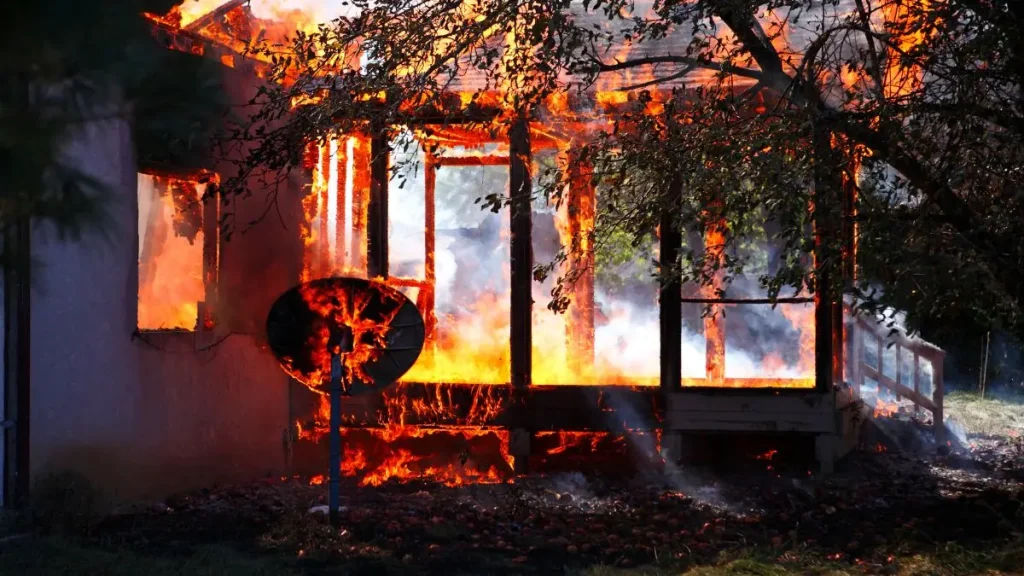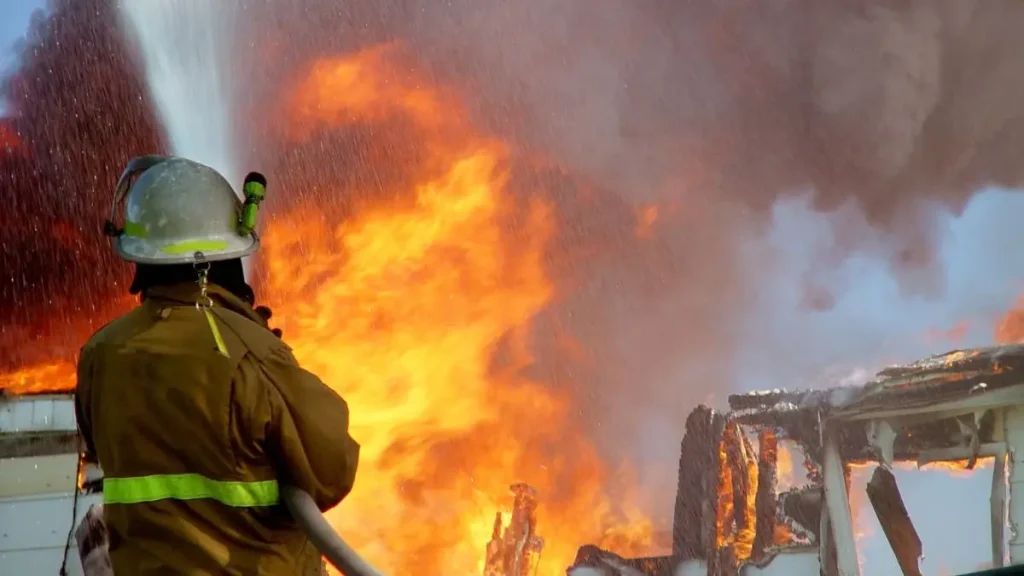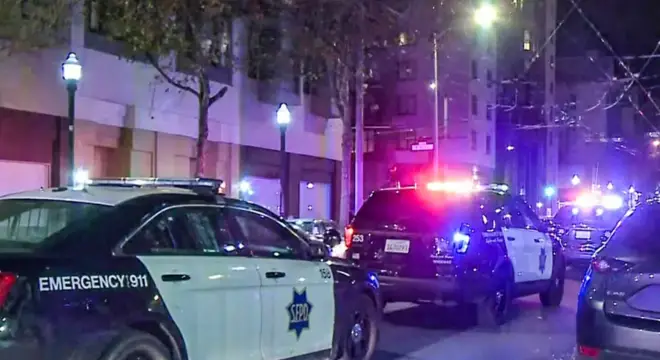California Home Fire Kills Resident; Authorities Investigate Cause
I woke up today to another heartbreaking reminder of how fragile life is—a house fire in Oceanside took one person’s life before sunrise. It happened just after 3:30 a.m. on Wedgewood Drive, tucked inside a quiet cul-de-sac where neighbors likely expected nothing more than another routine Monday.
But what makes this story heavier than most fire reports is what came before the flames. The person who died wasn’t just unlucky or caught off guard—they were already struggling. Oceanside police had been called to that home several times in recent days. Not for noise or violence, but for something harder to talk about: mental health and self-harm.
That’s what hit me. This wasn’t just a fire. This was a chain of cries for help that ended in tragedy.
According to a joint statement from Oceanside police and fire officials, the person who died had been the focus of multiple welfare checks. There were even standoffs. You can imagine how tense and heartbreaking those must’ve been—for officers, neighbors, and especially the person inside. Authorities said they tried to keep things safe. But despite the efforts, things unraveled.
What we still don’t know is how the fire started. Investigators are working on that. What we do know is that someone needed help—and didn’t get it in time.
Have you ever witnessed someone silently struggling like this? How do we get better at recognizing the signs—before it’s too late?
Early-Morning Blaze Claims One Life in Oceanside
The fire broke out just after 3:30 a.m. on Monday morning. That’s the kind of hour when most of us are asleep, not expecting anything to go wrong. But on Wedgewood Drive in Oceanside, someone’s life was already unraveling—and it ended in flames.
According to FOX 5 San Diego, firefighters reached the scene quickly. The second floor of the home was already burning by the time they arrived. They went in. They did what they could.
But someone didn’t make it out.
The only confirmed death so far is the person who lived there—the one who, we now know, had been the subject of multiple mental health-related welfare checks over the past few days. And that matters, because this wasn’t just a fire. This was the end of a slow, visible crisis.
Victim Linked to Prior Mental Health Calls and Police Standoffs
Right now, officials haven’t released a name. But we do know this: the person who died had already been crying out for help.
They weren’t unknown to Oceanside Police. Officers had been there several times before the fire—responding to reports about self-harm and serious mental health concerns.
And it wasn’t just knock-and-leave. Some visits escalated into standoff situations. That means officers were worried enough about safety to take extra precautions.
Think about that. A person in that much pain, that visible, still ended up alone in a burning house. If you’ve ever thought, “It’s not my place to get involved,” let this remind you—sometimes it absolutely is.
Have you ever been in a situation where someone close to you was clearly in distress, but no one knew how to step in? I’d really like to hear how you handled it—drop a comment below.
Fire Scene Investigation Underway: Forensics, Trauma Experts Involved

The scene on Monday morning wasn’t just filled with smoke—it was filled with questions.
Forensic teams were on site within hours. Trauma crisis specialists showed up too, which tells you this wasn’t just another fire. It was personal. Painful. And serious enough to bring mental health professionals out immediately.
A joint investigation is underway between Oceanside Fire and Police departments. Right now, we don’t know how the fire started—or even whether anyone else was hurt inside the home. The details are still coming together.
And if you’re like me, you’re probably wondering: Was this accidental? Was it suicide? Or could it have been something worse?
Until we get official confirmation, all we can do is pay attention—to the patterns, to the pain behind the headlines, and to the fact that this was more than just property loss. It was a life.
Updates like this—and on other fire safety stories across the U.S.—have been popping up on a few curated WhatsApp news channels lately. They’re a good way to stay alert if you’re someone who wants early context before the headlines break wide.
Oceanside Neighborhood Reacts to Tragic Fire
On a quiet cul-de-sac like Wedgewood Drive, this kind of tragedy hits different. It’s not a busy city block. It’s the kind of place where people recognize each other’s cars and wave while walking dogs.
When the fire broke out, neighbors stood outside watching it burn, probably stunned that the person they’d seen just days earlier was now gone. Some may have known about the police visits—others probably didn’t.
The Red Cross came out to assist anyone displaced or emotionally affected. And that says something. When support agencies arrive, it’s not just about replacing lost items—it’s about stabilizing the people left behind.
If you live in a community like that, this is your wake-up call: Mental health struggles don’t always look loud from the outside. But they’re real. And they’re closer than you think.
We saw something similar earlier this month in Washington, when a Pierce County care home fire raised tough questions about preparedness in vulnerable communities.
The Growing Pattern: Mental Health, Fire, and Public Safety
Let’s be honest—this isn’t the first time a mental health crisis has ended in tragedy like this. And it won’t be the last unless we change something.
Across the U.S., we’re seeing a rise in house fires tied to mental health struggles, especially when people are living alone and spiraling. Police are stuck between keeping neighborhoods safe and trying to de-escalate someone’s darkest moments.
According to the CDC, suicide was the 12th leading cause of death in the U.S. in 2023. That’s not just a stat—it’s a signal. Something is deeply off in how we catch and respond to emotional emergencies.
I’ve seen fire chiefs post about this on Twitter. One recently wrote, “We’re trained to fight flames, not hopelessness.” That line stuck with me.
The system’s under pressure, and if you’ve ever felt like your 911 call was a last resort—not a solution—you’re not alone.
Similar patterns showed up in a recent Utah house fire, where investigators suspected arson in a case that also involved past police interactions.
What Police and Fire Officials Are Saying?

In a rare joint statement, the Oceanside Police and Fire Departments confirmed the death and revealed key context.
They didn’t sugarcoat it. The person who died had been the subject of “multiple welfare checks”. Words like “self-harm,” “mental health concerns,” and “safety” were used directly. That matters—because it puts this incident in a very different light than just a random house fire.
They also said the investigation is ongoing and that they’re still working to figure out:
- The exact cause of the fire
- How many people were inside
- Whether any criminal or suicidal factors played a role
So far, they haven’t released the identity of the victim—or confirmed if others were hurt. But the fact that both agencies spoke together shows just how seriously they’re taking this.
Not all incidents end in tragedy, though—like the Freeport kitchen fire where quick response helped save lives and pets before things got worse.
Fire Safety for At-Risk Individuals
If you’re reading this and thinking, “That could’ve been someone I know”—you’re not alone. The truth is, fires like these aren’t always about faulty wiring or candles left burning. Sometimes, they’re the final chapter in someone’s mental health battle.
So let’s talk about what you can do right now—for your home, and for people who might be at risk:
- Check your smoke alarms. Make sure they work, and test them monthly. Most fatal home fires happen at night when people are asleep.
- Create an escape plan. Especially if you live with someone in emotional distress—knowing how to get out fast can save your life.
If you or someone you care about is showing signs of emotional overload—repeated 911 calls, isolation, panic episodes, or talks of self-harm—don’t wait.
Signs someone might need help:
- Sudden withdrawal from friends or family
- Comments about hopelessness or wanting to disappear
- Unusual agitation or repetitive emergency calls
- History of trauma or psychiatric hospitalization
If that sounds familiar, it’s okay to feel unsure. Just don’t ignore it. Silence never saved anyone.
Final Thoughts
Stories like these aren’t just about smoke and flames—they’re about the cracks in our systems, the quiet cries for help, and what gets overlooked until it’s too late. If you’ve ever felt helpless watching someone spiral, or unsure how to step in, know this: awareness is the first step, but action is what saves lives.
Stay alert, stay prepared—and don’t underestimate the power of checking in on someone.
For more on fires and safety trends across the U.S., explore our full Home Incidents section on Build Like New.
Disclaimer: This article is based on publicly available reports and official statements as of the time of writing. Details may evolve as investigations continue. Always refer to local authorities or verified sources for the latest updates.


